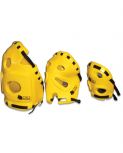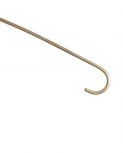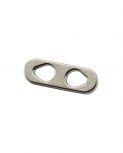Guarded Epiglottal Hook Knife
Treatment of epiglottal entrapment per nasum on a standing horse can be done with less risk when using a safety hook knife.
✚ Sold Individually
Based on our experience with this instrument, we consider the shielded hook knife to be a valuable means of limiting iatrogenic lesions.
An Epiglottal entrapment preformed under standing sedation with a hook bistoury knife has always been considered very dangerous and can be a slightly stressful procedure making sure that it’s done quickly and quietly because if the horse was to move the soft palate or surrounding tissues could have easily been cut accidently causing severe complications.
Marcel Marcoux DVM, MS and Mathieu Lacourt DVM saw these problems and designed the Guarded Epiglottal hook knife in 2008 with great results from leading veterinary surgeons.
“We have been using the Guarded Epiglottal hook knife for many years. It has provided us with a reliable and safe method of transecting the entrapping tissue in sedated horses under endoscopic guidance”- Rossdales Equine Hospital, Newmarket.
THE SURGICAL TECHNIQUE
60mls of Lidocaine was sprayed over the larynx and the nasal cavaties through a catheter in the endoscopic canal. A 5-min delay was allowed before introducing the endoscope in one nasum and the hook knife in the other nasum with the shield closed. Once the hook knife was positioned over the epiglottis, the shield was opened by exerting pressure on the handle and the hook was positioned under the entrapped tissues on the median axis of the epiglottis and retracted rostrally until the tip protruded from the mucosa. Special attention was paid to assure that the end of the hook pierced the mucosa as near as possible to the tip of the epiglottis to incise the mucosa in its entire length. The shield was closed by releasing pressure on the handle, and the mucosa was cut with a rostral movement. After the procedure, the epiglottis and the aryepiglottic fold were examined, and the procedure was repeated if needed.




